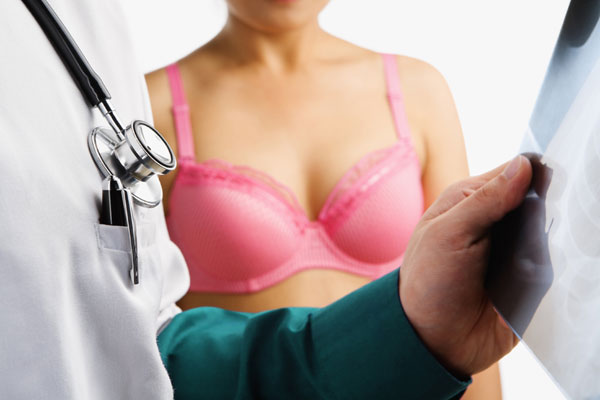Most Women Who Get Yearly Mammograms Will Face A False Alarm

Of women who get yearly mammograms, 61 percent will have at least one false-positive result over a decade, a new study shows.
And because of these 'false alarm' test results — which seem to indicate cancer but further tests reveal not to be tumors —7 to 9 percent of women will be recommended to get a biopsy.
If women are instead screened every other year, only 42 percent will have a false positive over a decade, but this lengthened screening interval brings a small increased risk of getting a later-stage cancer diagnosis, the study showed.
"We hope that by helping women know what to expect in terms of false-positive results, they'll be less likely to experience anxiety when they are called back for a repeat screening or biopsy," said study researcher Rebecca Hubbard, an assistant investigator at the Group Health Center for Health Studies in Seattle.
The study researchers say they recommend that women and their doctors develop a screening plan based on the patient's individual risk factors for breast cancer and her tolerance for dealing with such false alarms.
The study will be published online tomorrow (Oct. 18) in the journal Annals of Internal Medicine.
Mammogram recommendations
Sign up for the Live Science daily newsletter now
Get the world’s most fascinating discoveries delivered straight to your inbox.
The topic of how often women should get mammograms and at what age they should start has been controversial. The American Cancer Society recommends all women with average risk of breast cancer get a yearly mammogram starting at age 40, and the National Cancer Institute recommends women age 40 and older get a mammogram every year or two.
On the other hand, the U.S. Preventive Services Task Force issued new recommendations in 2009 that women should wait until age 50 to begin the screening, and should have a mammogram every other year, citing false detections, and the unnecessary biopsies and anxiety they can bring.
The new findings emphasized the importance of radiologists being able to review a patient's previous mammograms because it "may halve the odds of a false-positive recall,'' the researchers wrote. Though recommendations for for further testing — fine-needle aspiration or surgical biopsy — are less common than false positives, they can lead to unnecessary pain and scarring. The additional testing also contributes to rising medical costs.
"We conducted these studies to help women understand that having a false-positive result is part of the process for mammography screening," Hubbard said.
The researchers used data from seven mammography registries in the Breast Cancer Surveillance Consortium, a comprehensive breast cancer registry. They looked at data from nearly 170,000 women from seven regions around the United States, and almost 4,500 women with invasive breast cancer.
Mammograms are going digital
A second study compared digital mammograms with the older technology, film mammograms. Digital mammograms are increasingly being used, the researchers said.
That study included data nearly 330,000 women between the ages of 40 and 79, also from the Breast Cancer Surveillance Consortium.
The researchers found that digital and film mammography were equally effective for women over age 50, but for women ages 40 to 49 — especially those with dense breast tissue — digital mammograms were slightly more likely to find a cancer. However there was also an increased risk for false positive results for these younger women.
The researchers found that for every 10,000 women 40 to 49 who are given digital mammograms, two more cases of cancer will be identified for every 170 additional false-positive examinations.
Pass it on: Odds are that most women who get a yearly mammogram will get a false positive result at some point.
This story was provided by MyHealthNewsDaily, a sister site to LiveScience. Follow MyHealthNewsDaily on Twitter @MyHealth_MHND. Find us on Facebook.











